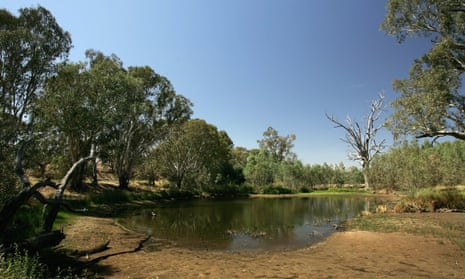Threats to the Australian environment get reported in bursts – a contested development decision or a particular conservation campaign can thrust an issue into the headlines and on to the nightly news bulletins for weeks before a deal is crunched and a “solution” heralded.
But the “solutions” are often illusory and the actual threats keep rising, away from the scrutiny of the political and news cycles.
As the last five-yearly and independent “state of the environment report” found: “The main pressures facing the Australian environment today are the same as in 2011: climate change, land use change, habitat fragmentation and degradation, and invasive species,” with interactions between them amplifying the threats.
It noted that in a few cases (such as air quality and poor agricultural practices) the pressures had eased, but in most (such as grazing, invasive species, habitat destruction, coalmining and urban growth) they had worsened.
After 30 years of environment reporting, on and off, it’s evident that the “deals” to end headline-grabbing environmental battles often aren’t enduring solutions at all, with the scrapping continuing away from the national public gaze.
I’ve reported multiple deals that were supposed to end the Tasmanian “forest wars” for all time, for example, but the Liberal government is going to the 3 March state election with a plan to water down this agreed balance between conservation and logging after failing to legislate it during their last term.
The allocation of water in the Murray-Darling has been disputed ever since we trekked with Bob Hawke to the tiny New South Wales town of Wentworth to hear him deliver the immodestly titled “world’s greatest environment statement”, but 29 years and multiple inquiries and “deals” later, water allocation is still in dispute and trust in the water-trading system is being undermined by allegations of poor administration and rorting.
Restrictions on land clearing in Queensland were the main reason Australia met its initial greenhouse gas reduction targets, but they’ve since been reversed.
The commonwealth’s main environmental laws were overhauled in the late 1990s after long national discussion, but two subsequent reviews have been largely ignored and governments stand accused of not using the powers that they have.
And in recent years the challenge of climate change and Australia’s endless, fact-poor policy debate about how to respond to it has chewed up increasing proportions of diminishing journalistic resources.
Australians are as concerned about the environment as ever and conservation groups continue to lobby and organise, using all the tools of modern social media campaigning, yet for many the challenges overwhelm their capacity to make headway. Talented environment reporters are still working in some media organisations, but the list of issues demanding their attention and investigation keeps growing longer.
That’s why Guardian Australia has begun a series of in-depth stories about the less-scrutinised threats to Australia’s natural places, led by our environment reporter Michael Slezak and starting today with contributor Adam Morton’s investigation into changes in environmental protection laws and in the attitudes of policymakers that make it harder for conservationists to campaign and advocate.
We consulted environmental experts and organisations in prioritising the topics to cover – including Bill Jackson, the lead author of the State of the Environment report, Prof Lesley Hughes from Macquarie University, David Ritter from Greenpeace, Peter Cosier from the Wentworth Group of Concerned Scientists, Darren Kindleysides from the Australian Marine Conservation Society, Sue Higginson from the Environmental Defenders’ Office, Jessica Meeuwig from the Centre for Marine Futures, Kelly O’Shanassy from the Australian Conservation Foundation, Lyndon Schneiders from The Wilderness Society and Kate Smolski from the NSW Nature Conservation Council.
Their lists of critical issues was long but many were recurring, including endangered species, invasive species, land clearing and water management.
This project is a work in progress, and we know our readers are deeply interested in environmental protection, so we are asking for ideas about where else we should look as well as support to keep the series going. If you would like to send us an idea, email us at widebrownland@theguardian.com and if you would like to help to fund our series, click here.

